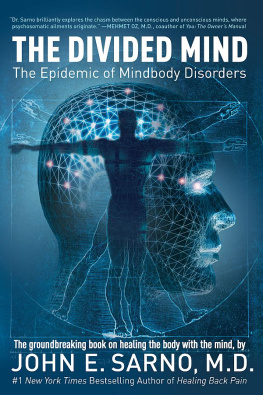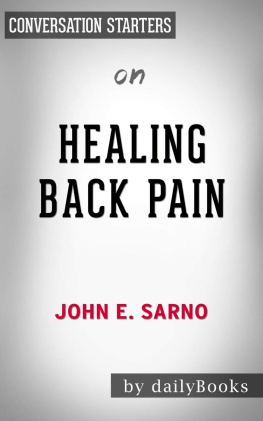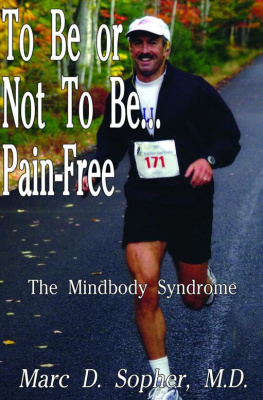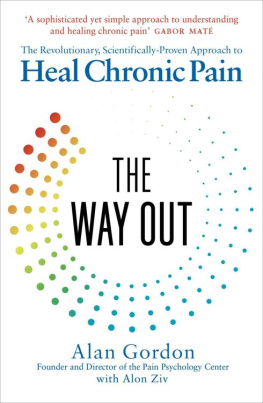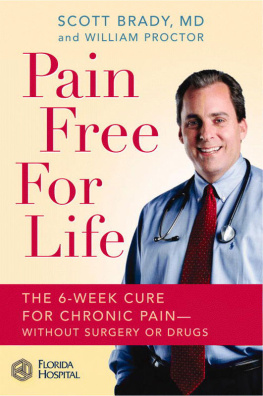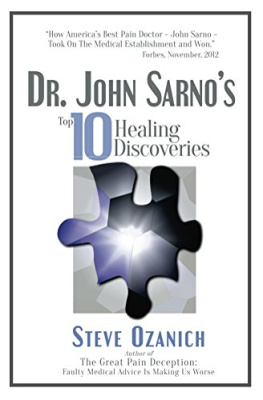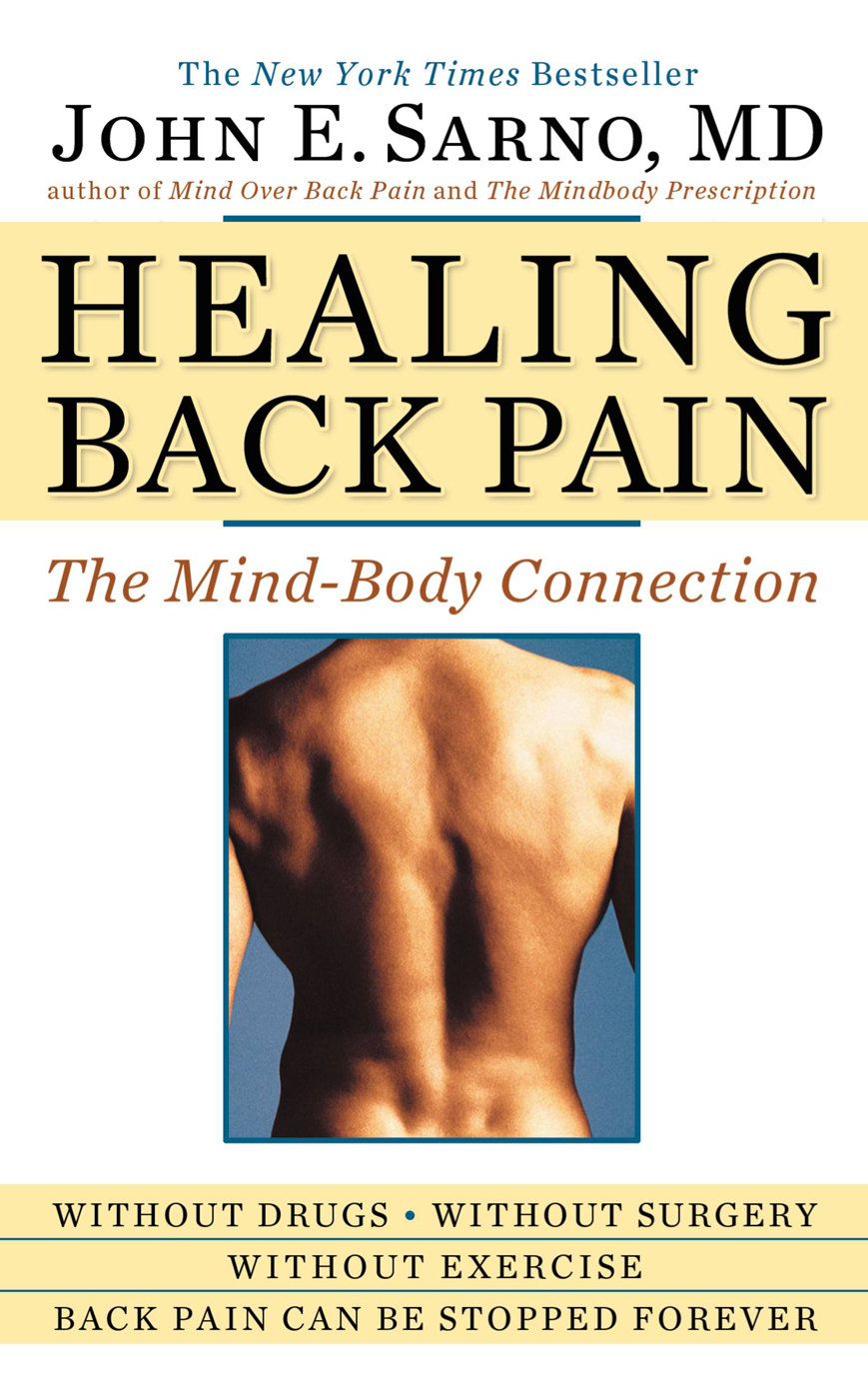WHAT DR. SARNO
TELLS HIS TMS PATIENTS
Resume physical activity. It wont hurt you.
Talk to your brain: Tell it you wont take it anymore.
Stop all physical treatments for your backthey may be blocking your recovery.
Repress your anger or emotionsthey can give you a pain in the back.
Think of yourself as being injured. Psychological conditioning contributes to ongoing back pain.
Be intimidated by back pain. You have the power to overcome it.
Using the actual case histories of his own patients, Dr. John Sarno shows why tension and unexpressed emotionsparticularly angercause chronic back pain, and how awareness and understanding are the first steps to doing something about it.
This book is the successor to Mind Over Back Pain, which was published in 1984. It described a medical disorder known as the Tension Myositis Syndrome (TMS), which I have had reason to believe is the major cause of the common syndromes of pain involving the neck, shoulders, back, buttocks, and limbs. In the years since that first publication, I have further developed and clarified my concepts about how to diagnose and treat TMS, hence the necessity for this book.
Over the years, the increasing incidence of these pain syndromes has created a public health problem of impressive proportions. One continues to see the statistic that somewhere around 80 percent of the population have a history of one of these painful conditions. An article in Forbes magazine in August 1986 reported that $56 billion are spent annually to deal with the consequences of this ubiquitous medical disorder. It is the first cause of worker absenteeism in this country and ranks second behind respiratory infections as a reason for a doctor visit.
All this has happened in the past thirty years. Why? After a few million years of evolution, has the American back suddenly become incompetent? Why are so many people prone to back injury? And why has the medical profession proven so helpless to stem the epidemic?
It is this books purpose to answer those and many other questions about this widespread problem. The thesis will be advanced that, like all epidemics, this one is the result of medicines failure to recognize the nature of the diseasethat is, to make an accurate diagnosis. The plague ravaged the world because no one knew anything about bacteriology or epidemiology at the time. It may be hard to believe that highly sophisticated twentieth-century medicine cannot properly identify the cause of something so simple and common as these pain disorders, but physicians and medical researchers are, after all, still human and, therefore, not all-knowing and, most important, subject to the enduring weakness of bias.
The pertinent bias here is that these common pain syndromes must be the result of structural abnormalities of the spine or chemically or mechanically induced deficiencies of muscle. Of equal importance is another bias held by conventional medicine that emotions do not induce physiologic change. Experience with TMS contradicts both biases. The disorder is a benign (though painful) physiologic aberration of soft tissue (not the spine), and it is caused by an emotional process.
I first appreciated the magnitude of this problem in 1965 when I joined the staff of what is now known as the Howard A. Rusk Institute of Rehabilitation Medicine at New York University Medical Center as director of outpatient services. It was my first introduction to large numbers of patients with neck, shoulder, back, and buttock pain. Conventional medical training had taught me that these pains were primarily due to a variety of structural abnormalities of the spine, most commonly arthritic and disc disorders, or to a vague group of muscle conditions attributed to poor posture, underexercise, overexertion, and the like. Pain in the legs or arms was presumed due to compression (pinching) of nerves. However, it was not at all clear how these abnormalities actually produced the pain.
The rationale for the treatment prescribed was equally perplexing. Treatment included injections, deep heat in the form of ultrasound, massage, and exercise. No one was sure what these regimens were supposed to do, but they seemed to help in some cases. It was said that the exercise strengthened the abdominal and back muscles and that this somehow supported the spine and prevented pain.
The experience of treating these patients was frustrating and depressing; one could never predict the outcome. Further, it was troubling to realize that the pattern of pain and physical examination findings often did not correlate with the presumed reason for the pain. For example, pain might be attributed to degenerative arthritic changes at the lower end of the spine, but the patient might have pain in places that had nothing to do with the bones in that area. Or someone might have a lumbar disc that was herniated to the left and have pain in the right leg.
Along with doubt about the accuracy of conventional diagnoses, there came the realization that the primary tissue involved was muscle, specifically the muscles of the neck, shoulders, back, and buttocks. But even more important was the observation that 88 percent of the people seen had histories of such things as tension or migraine headache, heartburn, hiatus hernia, stomach ulcer, colitis, spastic colon, irritable bowel syndrome, hay fever, asthma, eczema, and a variety of other disorders, all of which were strongly suspected of being related to tension. It seemed logical to conclude that their painful muscle condition might also be induced by tension. Hence, the Tension Myositis Syndrome (TMS). (


